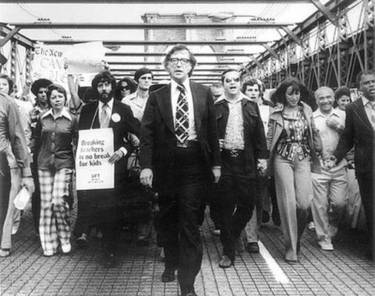The first Monday in September is Labor Day, a holiday which celebrates the American worker and recognizes improvements for workers over the past 100 years. One prominent workers rights issue, which has long been a point of tension, is the question of whether or not to raise the minimum wage. On the one hand, raising the minimum wage puts more money in the hands of workers, but some argue this may deter employers from creating jobs. On the other, lowering the minimum wage may encourage job growth, but may not be enough for workers to live on.
Use the following trusted PBS Learning Media resources to learn about the minimum wage debate and the history behind labor day.
The History of Labor Day
During the Industrial Revolution, workers were often overworked for low pay in dangerous conditions. In the late 1880’s workers started to protest and form unions. These reforms led to the introduction of the 8 hour work day, child labor laws, and pay raises. Learn about the history of Labor day with the following KQED Lowdown post.
Interactive: Raising the Minimum Wage
Use this interactive KQED Lowdown article to learn about California’s rising minimum wage. In 2016, California lawmakers voted to raise the minimum wage to $15/hr by 2022. This would increase the average income by about $3700 for 5.6 million low wage workers.
What’s the Minimum Wage Where You Live?
Check out this KQED Lowdown Map to determine what the minimum wage is in your state relative to the federal minimum wage, and relative to other states.
